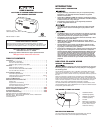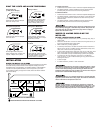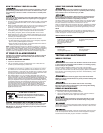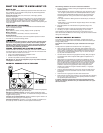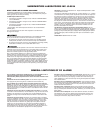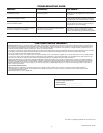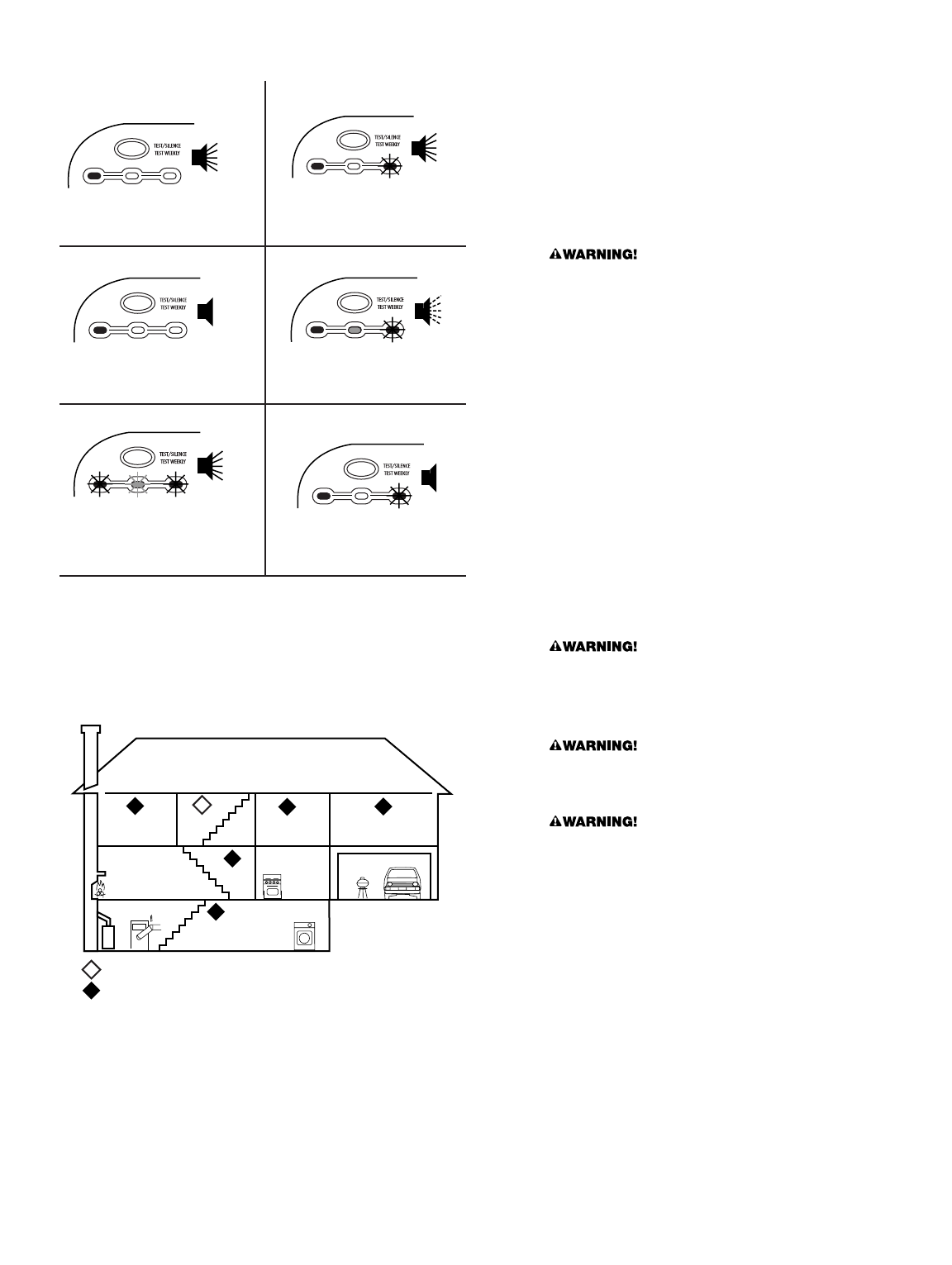
INSTALLATION
WHERE TO INSTALL CO ALARMS
The National Fire Protection Association (NFPA) recommends that a CO Alarm
should be centrally located outside of each separate sleeping area in the
immediate vicinity of the bedrooms. For added protection, install additional
CO Alarms in each separate bedroom, and on every level of your home.
If your bedroom hallway is longer than 40 feet, install a CO Alarm at BOTH
ends of the hallway.
Using the Silence Feature
in Alarm
Green light ON. Yellow light OFF.
Red light FLASHES. Horn silent for
4 minutes. Refer to “Using The
Silence Feature” for details.
2
WHAT THE LIGHTS AND ALARM TONES MEAN
During Normal Test
All three lights flash briefly. Horn
pattern repeats twice: 4 beeps, then
a pause, 4 beeps, then a pause.
During Power Up
(or After Power Outage)
Green light ON. Yellow & red lights
OFF. Horn “chirps” once.
During Normal Operation
Green light ON. Yellow & red lights
OFF. Horn silent.
During an Alarm
Green light ON. Yellow light OFF.
Red light FLASHES. Repeating
horn pattern: 4 beeps, then a
pause, 4 beeps, then a pause.
During Alarm Malfunction
Green light ON. Yellow light ON.
Red light FLASHES. Horn “chirps”
about twice a minute.
GARAGE
SUGGESTED AREAS FOR INSTALLING ADDITIONAL CO ALARMS
BEDROOM
BEDROOM
HALL
LIVING ROOM
KITCHEN
BASEMENT
BEDROOM
REQUIRED TO MEET NFPA RECOMMENDATIONS
In a Single-level Home:
• Install at least one CO Alarm near or within each separate sleeping area.
• For added protection, install an additional CO Alarm at least 20 feet
(6 meters) away from the furnace or fuel burning heat source.
In a Multi-level Home:
• Install at least one CO Alarm near or within each separate sleeping area.
• For added protection, install at least one CO Alarm on each level of the
home. If you have a basement, install that CO Alarm at the top of the
basement stairs.
• For added protection, install an additional CO Alarm at least 20 feet
(6 meters) away from the furnace or fuel burning heat source.
This unit does not work without power. Choose an outlet where it can’t
be accidentally unplugged or switched off by children. Keep small chil-
dren away from the unit. Teach them not to play with it or unplug it.
Explain what the alarms mean.
WHERE CO ALARMS SHOULD NOT BE
INSTALLED
DO NOT LOCATE THIS CO ALARM:
• In garages, kitchens, furnace rooms, or in any extremely dusty, dirty or
greasy areas.
• Closer than 20 feet from a furnace or other fuel burning heat source, or
fuel burning appliances like a water heater.
• Within 5 feet of any cooking appliance.
• In extremely humid areas. This alarm should be at least 10 feet from a
bath or shower, sauna, humidifier, vaporizer, dishwasher, laundry room,
utility room or other source of high humidity.
• In areas where temperature is colder than 40˚F (4˚C) or hotter than 100˚F
(38˚C). These areas include unconditioned crawl spaces, unfinished
attics, uninsulated or poorly insulated ceilings, porches, and garages.
• In turbulent air, like near ceiling fans, heat vents, air conditioners,
fresh air returns, or open windows. Blowing air may prevent CO from
reaching the sensors.
• In direct sunlight.
• In outlets covered by curtains or other obstruction.
This CO Alarm is designed for use inside a single-family home or apart-
ment. It is not meant to be used in common lobbies, hallways, or base-
ments of multi-family buildings unless working CO Alarms are also
installed in each family living unit. CO Alarms in common areas may not
be heard from inside individual family living units.
This CO Alarm alone is not a suitable substitute for complete detection
systems in places which house many people, like hotels or dormitories,
unless a CO Alarm is also placed in each unit.
DO NOT use this CO Alarm in warehouses, industrial or commercial
buildings, special-purpose non-residential buildings, RVs, boats, or air-
planes. This CO Alarm is specifically designed for residential use, and
may not provide adequate protection in non-residential applications.



